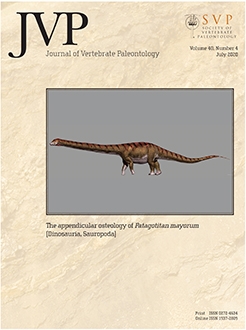The temnospondyl ‘Dissorophus’ angustus from the lower Permian (Archer City Formation) of Texas is one of several neglected taxa assigned to Dissorophidae. It shares with other dissorophids the presence of median osteoderms along the tips of the vertebral neural spines, but in a unique arrangement of an anterior set of external and internal osteoderms from vertebrae 5–9 followed by a transition at vertebra 10 to a single series ending at vertebra 17. This pattern has been interpreted as either an evolutionary intermediate between dissorophids with a single row of osteoderms and those with a double set or a growth stage from a juvenile with a single row to an adult with a full series of external and internal osteoderms. Restudy of the holotype indicates it is a relatively mature individual, confirms the unique arrangement of the osteoderms, and expands the list of autapomorphies to include additional features of the osteoderms, otic notch, stapes, and pelvic girdle. The holotype is redescribed as Diploseira angusta gen. et comb. nov. Phylogenetic analysis supports Diploseira as a dissorophid, but fails to resolve its placement among those dissorophids with osteoderms other than it is not likely a eucacopine. Removal of wildcard taxa provides support for Diploseira as a dissorophine. Incorporation of additional characters of osteoderms into the phylogenetic analysis has revealed no apparent pattern, suggesting a species-specific evolution of dissorophid osteoderms.
How to translate text using browser tools
9 December 2020
Revision of the Early Permian Dissorophid ‘Dissorophus’ angustus (Temnospondyli: Dissorophoidea)
David W. Dilkes
ACCESS THE FULL ARTICLE

Journal of Vertebrate Paleontology
Vol. 40 • No. 4
July 2020
Vol. 40 • No. 4
July 2020




